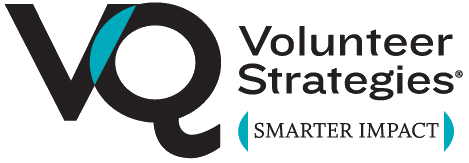Blog: When is the 3 o’clock Parade?

With the 2022 Points of Light Conference on Volunteering and Service confirmed as a hybrid event — with the onsite location confirmed at Disney’s Coronado Springs Resort — I can’t help but think of this blog we shared back in 2016. Enjoy this encore publication of this post and I hope to see at the Points of Light conference – online or in person. (Maybe we can go watch the parade together… as long as we know when it starts!)
What can your organization learn from parades, ice cream cones, strollers, and Mickey Mouse? Believe it or not, quite a bit. Recently, an article about Disney came across my news feed and caught my attention. I was drawn to it not because I was looking out my window at the snow, pining away for a sunny Disney vacation (well, maybe that had a little something to do with it?), but because I have long been intrigued by Disney Institute, an organization dedicated to helping others learn from the core competencies in which The Walt Disney Company excels, namely Leadership, Customer Service, and Employee Engagement.
The article opens with a question that visitors to Disney theme parks frequently ask of Disney employees, “What time is the 3 o’clock parade?” While the answer seems obvious, Disney employees (known in the biz as “cast members”) are trained not to answer with an eye-roll and “Well… 3 o’clock, of course.” Rather, they are trained to recognize that park visitors are likely seeking additional information. They may want to know when the parade will get to them or where the best vantage point is. Cast members draw upon their extensive training in customer service to offer additional information, providing advice customized to that visitor.
Reading this immediately reminded me of my years working in museums, developing exhibitions and training and supporting volunteers who worked as interpreters in our blockbuster shows. Instead of providing formal tours through these large, crowded exhibits, volunteer interpreters were stationed throughout the galleries at key artifacts (often very large, iconic artifacts – like the Aztec sun stone – or very rare, valuable objects – such as ancient Chinese jades) with the goal of engaging visitors in conversation and learning about the exhibition.
Our museum was well known for exceptionally beautiful and well executed signage (labels) in the galleries. So, when visitors gazed at Chinese terra cotta warriors and asked, “How old are these?”… or “What are the terra cotta warriors made out of?” the interpreters certainly could have pointed to the exhibit label and said, “See, they are more than 2000 years old” or simply, “Um. They are made of terra cotta.” Instead, we trained interpreters to recognize such questions as an invitation for conversation, as a sign that the visitor likely wanted to learn more, but didn’t know what to ask. They were trained through multiple methods, including role play and mentoring, to provide the answer while placing it in historical and cultural context along with additional information.
We even shared useful questions and comments for interpreters to use when visitors didn’t ask anything but exhibited behaviors that indicated that they might be interested in talking (e.g., hanging around the object for a long time, listening to conversations between the interpreter and other visitors). We actually developed the list of effective opening lines (“pick-up lines” we sometimes called them) by observing interpreters who were really effective at engaging visitors in conversation and grew this collection of pick-up lines over the years.
Thanks to this ongoing training, volunteer interpreters understood that a question such as, “What are the terra cotta warriors made of?” was not a closed question with one answer, rather it was an invitation to learn more, to talk, to engage with the interpreters, with the objects, and with history. In every organization and in nearly every role (particularly those roles that require interaction with the public), volunteers have the opportunity to answer questions. How are you training them to view those questions? Are they distractions or opportunities? What is your organization’s version of, “When is the 3 o-clock parade?” and how can you train and support volunteers and staff to embrace those questions and leverage them as opportunities to make a personal connection with the public, make them feel special, and, as Disney Institute puts it, exceed their expectations?
To get started, here are a few tips:
- Ask your volunteers what your organization’s “When is the 3 o-clock parade?” question? They are on the front line and will likely know as well – or better – than you.
- Engage volunteers in helping you develop training on how to leverage these questions as opportunities.
- Have new volunteers shadow experienced volunteers as part of their training to observe these subtle, nuanced interactions.
- If you don’t already have these, develop a customer service vision and standards and include both staff and volunteers in training around them.
